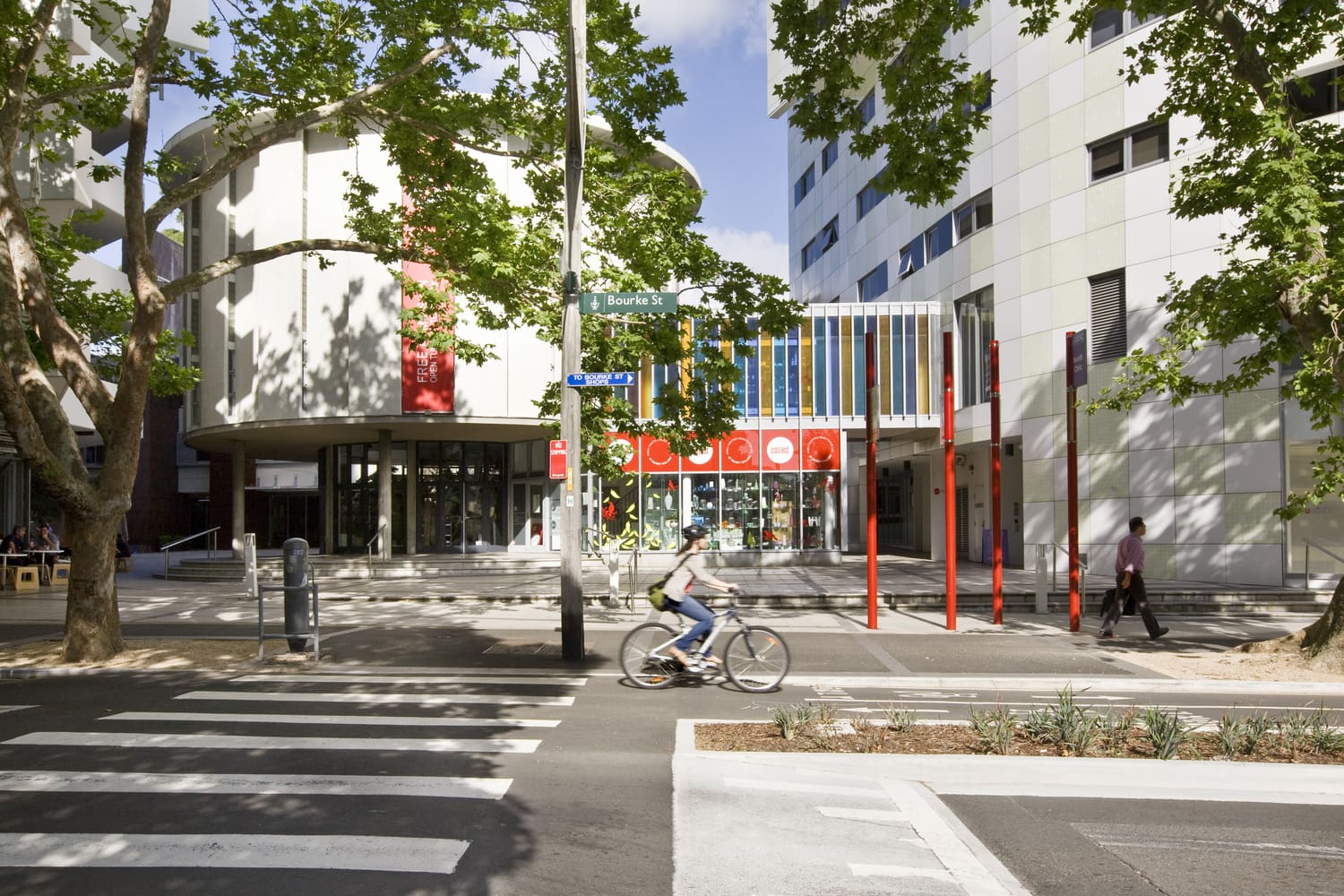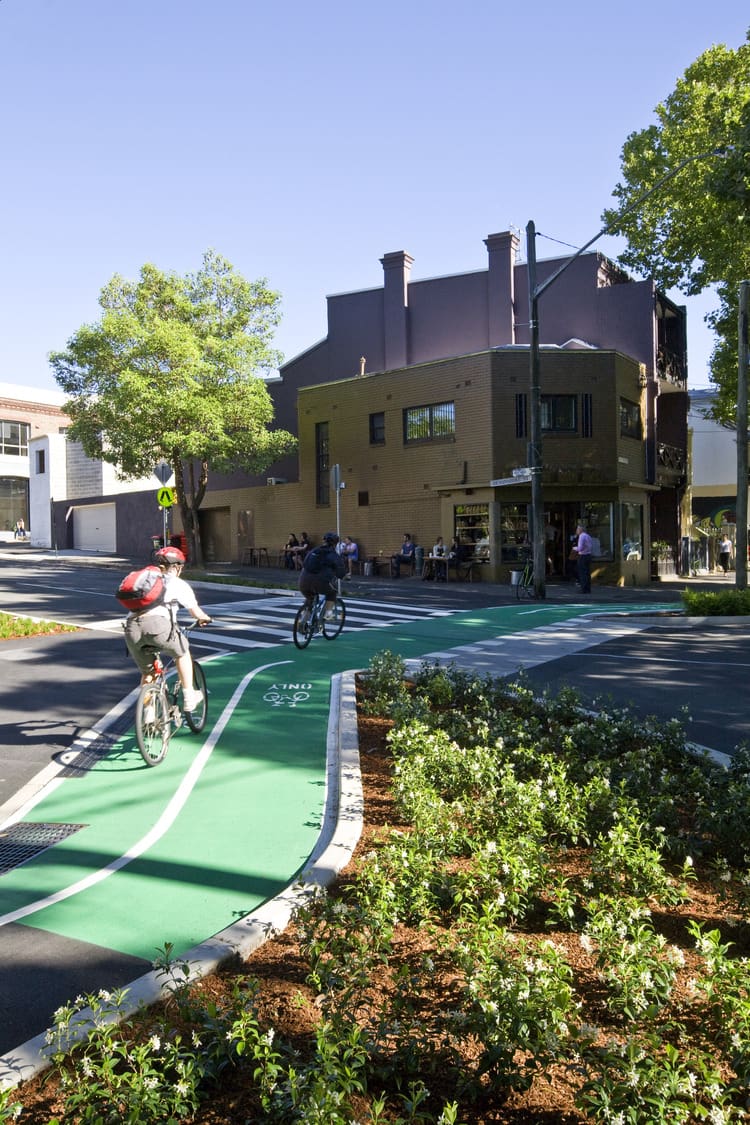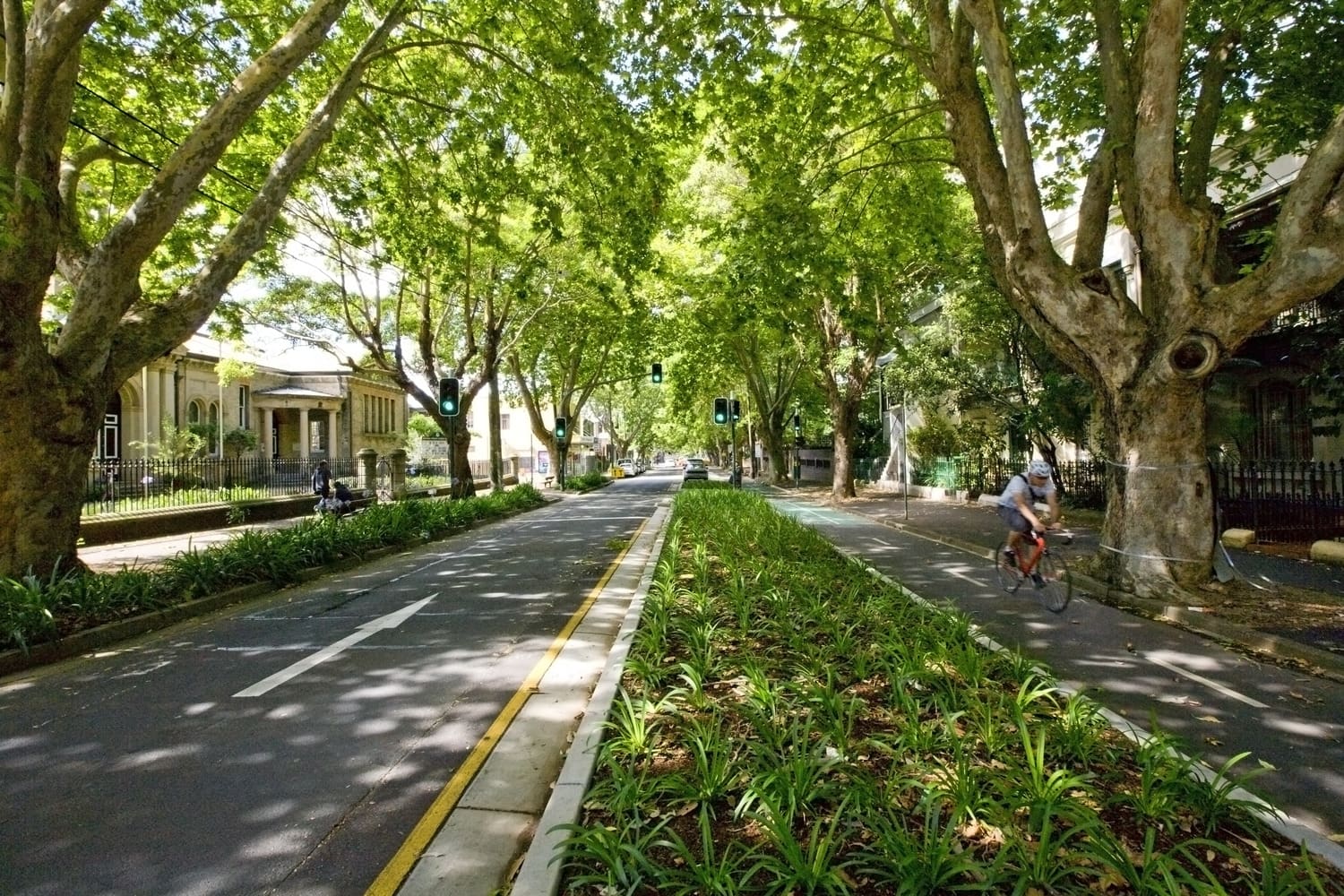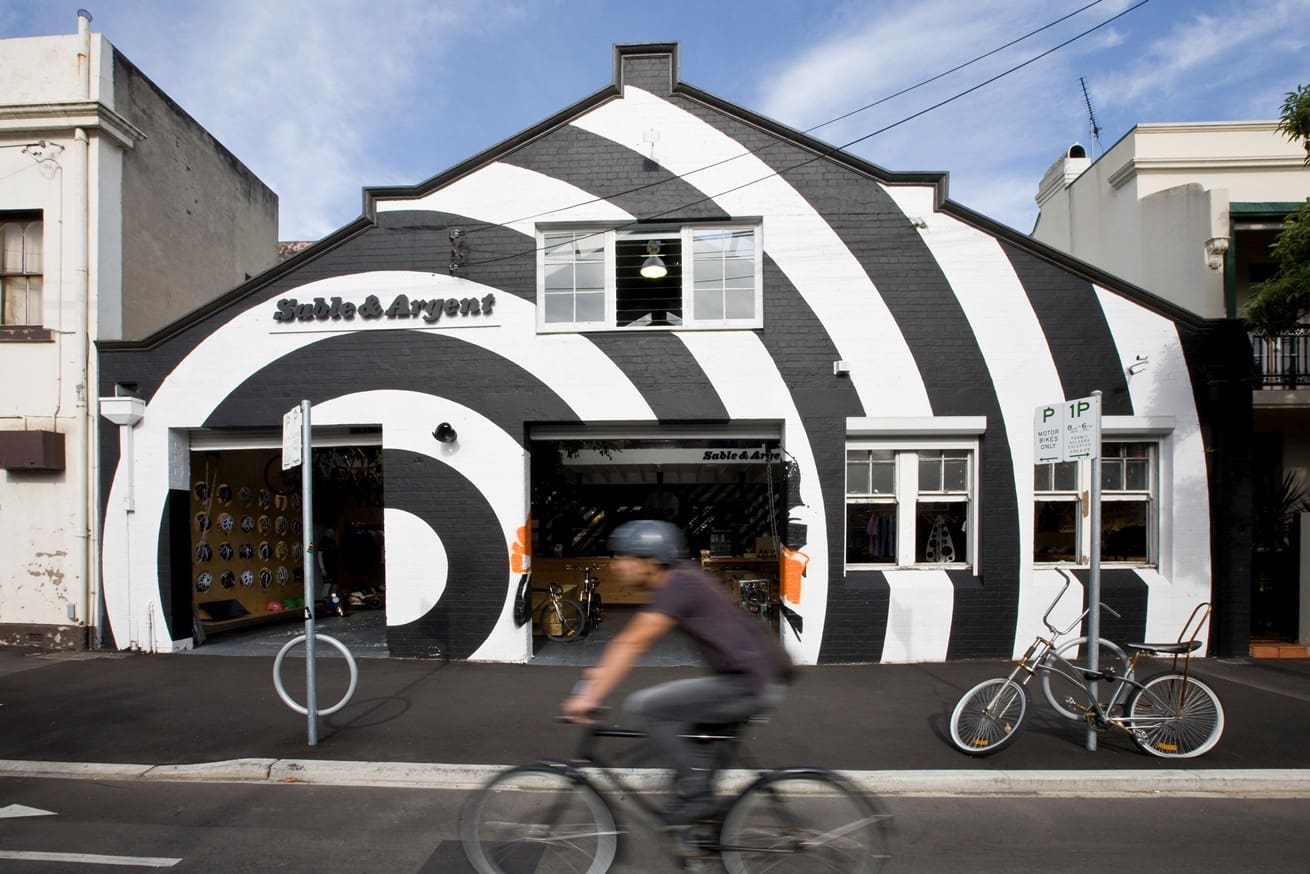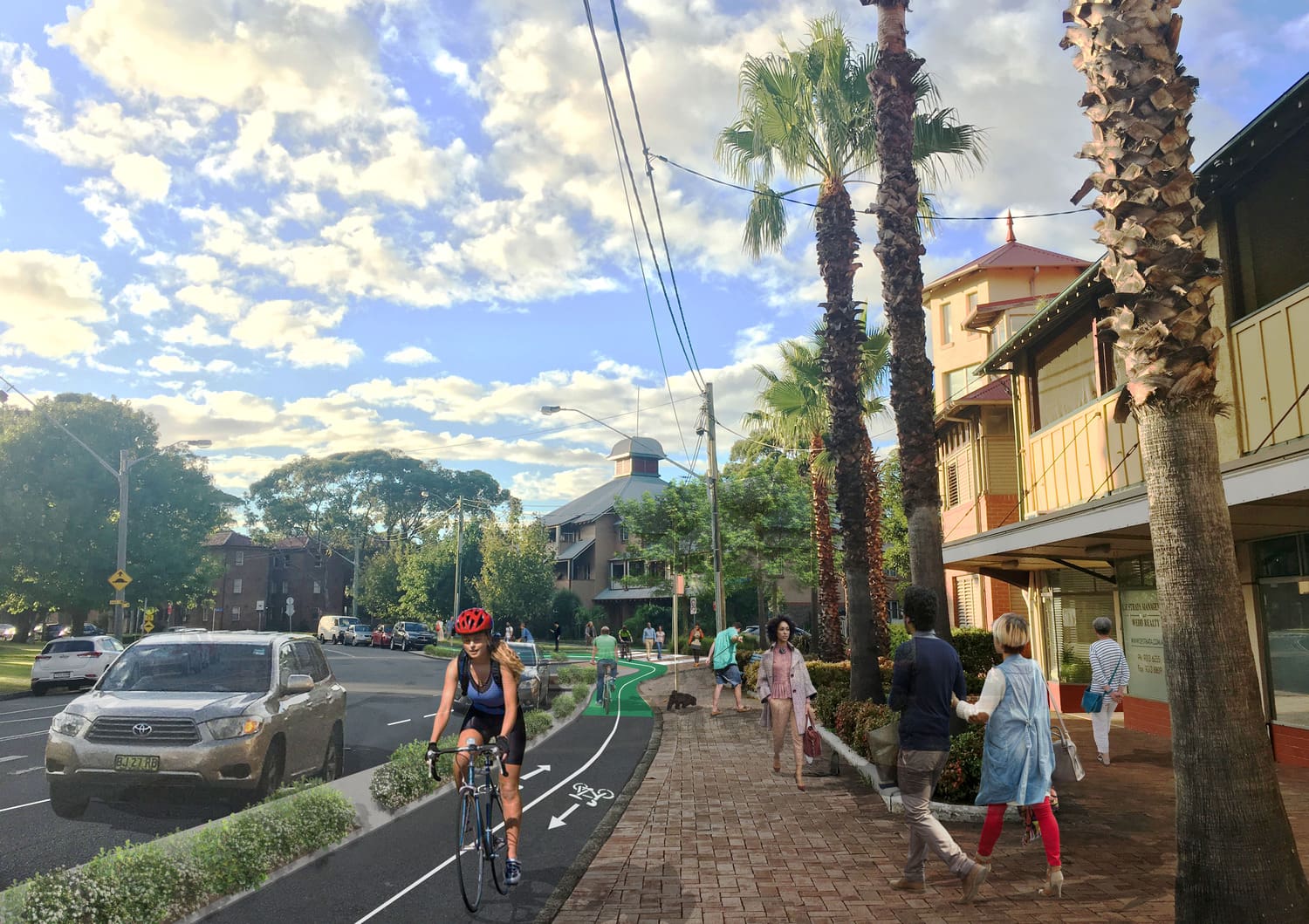The City of Sydney’s 2022-23 budget set aside over $69 million for bicycle related works over the next four years
Data from the City of Sydney reports that ‘trips by bike’ across the local area were up 18% at peak hours compared to 2022. Cycleways that cross major intersections, such as Bourke Street cycleway in Surry Hills (designed by GroupGSA), have seen a daily average of 1,616 bike trips this year, up 41% on last year and higher than all previous years.
The City of Sydney’s 2022-23 budget set aside over $69 million for bicycle-related works over the next four years, spending an average of $17.35 million per year on cycle infrastructure.
Landscape architects play a crucial role in designing and delivering safe and sustainable cycle paths which put the community first. This involves considering different user groups, accommodating evolving bicycle types, addressing intersections and traffic concerns, and integrating with local transportation infrastructure.
Some of our landscape architecture team – Clare O’Brien , Moh Shahzaib and Samuel Clare attended an 8-week program held by UNSW’s Australian Graduate School of Engineering to learn more about Active Transport: Cycleway Design.
With a syllabus guided by the NSW Government and local councils, here is a snapshot of the key learnings and what we foresee as the landscape architect’s ever-evolving role in cycleway design.
User experience and safety
In the City of Sydney alone, more than 30,000 people choose to ride a bike each week, emphasising the significance of cycling infrastructures. To ensure inclusivity in design, it is crucial to consider the diverse range of users who rely on cycleways and what their experience may look like.
The design and planning of cycling infrastructure should prioritise the ease of reaching everyday destinations. It should consist of well-connected routes that are straightforward to navigate and consistently maintained at a level suitable for the anticipated volume of cyclists.
People generally fall into one of four categories when it comes to cycling; ‘Strong and fearless’, ‘Enthused and confident’, ‘Interested but concerned’ and ‘No way no how’ – with the greatest portion being ‘Interested but concerned’ at 48%. This highlights the significance put on landscape architects to prioritise the user experience and eliminate safety concerns by considering factors such as visibility and traffic. Increased public awareness of cycleways will hopefully increase momentum to build more projects and further strengthen the cycle network.
As the popularity of e-bikes and cargo bikes continues to rise, it has become necessary to adapt cycleway provisions to accommodate these evolving bike types such as lowering curbs and providing a clear delineation between cycleways and other modes of transportation.
It is crucial to analyse user needs, traffic patterns, and potential hazards to create safe and enjoyable routes for cyclists. By incorporating elements such as signage and wayfinding.
According to the City of Sydney the busiest intersection recorded in 2022 was between Oxford Street/Flinders Street and Bourke Street experiencing 2,701 trips per day during peak hours – slowing vehicular traffic around intersections is another consideration to reducing accidents and injuries and changing the perception cycling safety in our cities.
Aesthetic appeal and placemaking
Cycleways are not only transportation corridors but also important public spaces which should consider visual appeal, accessibility, and integration into the environment.
Considerations to elements like planting and tree canopy, street furniture, lighting, public art, and urban design features enhance the overall aesthetic appeal of cycleways, making them attractive and enjoyable for users and contributing to the placemaking of the surrounding area.
The environment encountered while cycling can range from appealing to intimidating and, can either encourage or discourage cyclists from choosing a specific route. In fact, these surroundings may even determine whether individuals opt for cycling as their mode of transportation. It is important for cycling infrastructure to connect with and enhance well-designed public spaces that people genuinely enjoy spending time in.
These dedicated paths contribute to the overall liveability of cities and towns, creating inviting spaces that connect communities and facilitate social interaction.
Sustainability and environmental considerations
Landscape architecture places a strong focus on sustainability and environmental stewardship. By integrating sustainable design principles into cycleway projects, such as using permeable surfaces to manage stormwater runoff, selecting native plants for landscaping, accommodating existing trees with localised bend outs in the cycleway and incorporating green infrastructure elements. These factors mitigate the environmental impact of cycleways and contribute to a more sustainable urban ecosystem.
A typical cycleway project can take three to five years to complete and can be impeded by many things, which must be accounted for in the design phase. For example, the removal or relocation of Ausgrid power poles can take up to 18 months. Approvals for traffic signal modifications can take 1.5 to 3 years. Community concern can lead to design modifications and add additional steps to what was originally planned.
Despite this, cost effective design solutions are becoming more favourable by councils, to allow temporary resolutions. This has allowed cycleways to be implemented sooner whilst funding is sought for a more permanent solution.
Collaboration and multidisciplinary approach
Designing cycleways involves collaboration with various stakeholders, including landscape architects, transport engineers, civil engineers, urban planners and inclusivity consultants, local communities, and government agencies. It is this collaboration which brings different perspectives, to ensure that cycleways align with broader urban planning goals, transportation networks, and community aspirations.
Project in focus – Randwick Cycleway
We are also developing Randwick Cycleway in Sydney’s Eastern Suburbs, which consists of two new cycleways stretching 4.2km. These routes serve as a connection between the recently constructed Light Rail Terminus in Kingsford, Centennial Park, the Sydney CBD, and onwards to South Coogee (renders featured above).
Both cycleways wind through residential areas, crossing major arterial roads such as Alison Road and Anzac Parade. The design has been carefully crafted to promote the health and well-being of the communities they pass through. They aim to enhance the pedestrian experience, foster greater urban connectivity, and improve the streetscape. Notable features include a significant increase in greenery and tree coverage, the creation of safer pedestrian walkways, and enhancements to street calming measures.
We believe a holistic approach is crucial for designing cycleways that meet functional requirements and contribute to the overall quality of urban spaces. By embracing the mentioned considerations, we can foster a cycling-friendly environment that promotes active transportation.
Read more about our Cycleway Projects:
Bay Run Cycleway
Bourke Street Cycleway
And another article: Cycling for a Connected City
Data source: Cycling | City of Sydney



